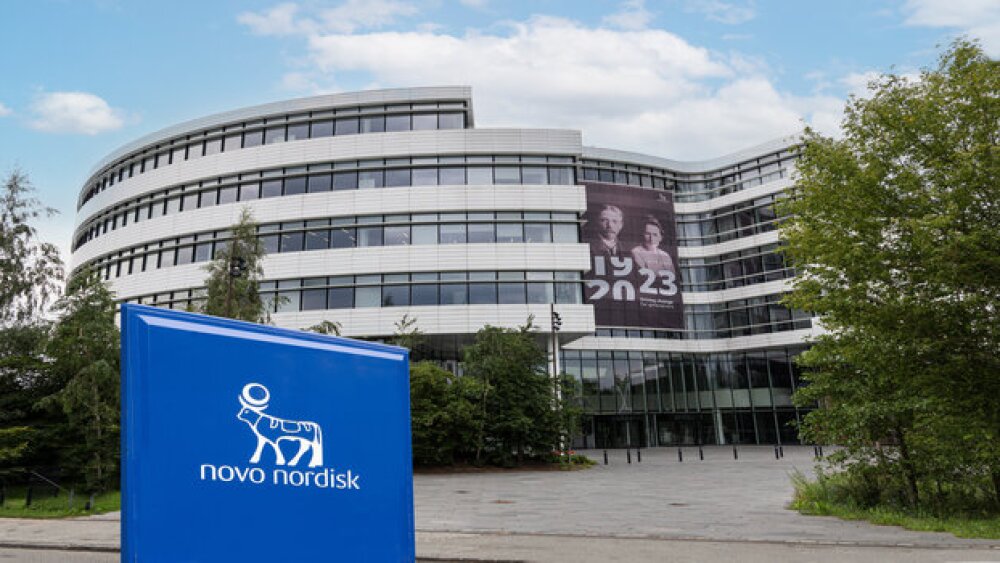Shares of Eli Lilly jumped in premarket trading after the company reported total revenue of $6.35 billion for the second quarter, a 9 percent increase in revenue over the same period last year.
Jonathan Weiss / Shutterstock
Shares of Eli Lilly jumped in premarket trading after the company reported total revenue of $6.35 billion for the second quarter, a 9 percent increase in revenue over the same period last year. Lilly said the revenue surge was driven by a 10 percent growth from its pharmaceutical revenue.
Indianapolis-based Lilly said that more than one-fourth of its pharmaceutical revenue for the second quarter was driven by new pharma products or new indications for existing drugs. Those regulatory approvals include drugs like Trulicity, Taltz, Cyramza, Basaglar, Jardiance, Lartruvo, Verzenio, and Olumiant. Sales from those medications attributed to 28 percent of total pharma revenue for the company, Lilly said in a statement this morning.
Over the second quarter, Lilly saw several positives for its pharmaceuticals business, including the approval and launch of Olumiant (baricitinib), a once-daily oral medication for the treatment of adults with moderately-to-severely active rheumatoid arthritis. The U.S. Food and Drug Administration (FDA) also approved a label update for psoriasis treatment Taltz to include the genital area. Lilly said it plans to seek an additional approval for Taltz later this year for the treatment of Ankylosing Spondylitis after it met late-stage endpoints during the second quarter.
Also during the second quarter, Alimta snagged approval for a new indication from the FDA. The drug was approved as part of a combination with carboplatin and Merck’s Keytruda for the initial treatment of patients with metastatic nonsquamous non-small cell lung cancer (NSCLC), regardless of PD-L1 expression status. Trulicity also secured approval for a new indication as a treatment for patients with type 2 diabetes who have moderate to severe chronic kidney disease.
During the quarter Eli Lilly also saw some developmental successes, particularly with its migraine treatment. The company released positive Phase III results for its galcanezumab-gnlm treatment for patients with episodic cluster headache. The drug failed though to meet endpoints in treating chronic cluster headache.
David Ricks, Eli Lilly’s chief executive officer, said the company’s worldwide revenue increase was “fueled by volume growth” of new medicines. He also noted that the company’s pipeline also continued to show off promise for future revenue, particularly with several “positive late-stage data readouts,” as well as assets the company gained through M&A. During the second quarter, Lilly acquired immuno-oncology company ARMO BioSciences and AurKa Pharma.
When it comes to the highly-politicized issue of drug pricing, Ricks said the company has not made a list price increase for any of its medications since President Donald Trump announced his health care blueprint earlier this year. Ricks said the company is focused on “driving revenue growth through volume” and not through price increases. Earlier this month Pfizer backtracked on announced price increases and Merck announced it was reducing the price of some of its medications, although those were ones that already faced generic competition.
Our second-quarter 2018 results reflect this strategy, and the guidance we have provided for 2018 does not assume U.S. price increases for the remainder of the year. As the responses to the Blueprint are considered, we are hopeful that progress will be made on implementing proposals that lower the out-of-pocket cost of medicines for patients,” Ricks said.
In addition to its pharma growth, Eli Lilly said it will also file for an initial public offering for Elanco, its animal health business. Ricks said the move will “maximize the after-tax value for Lilly shareholders and provide Lilly with even greater focus on our human pharmaceutical business.”





